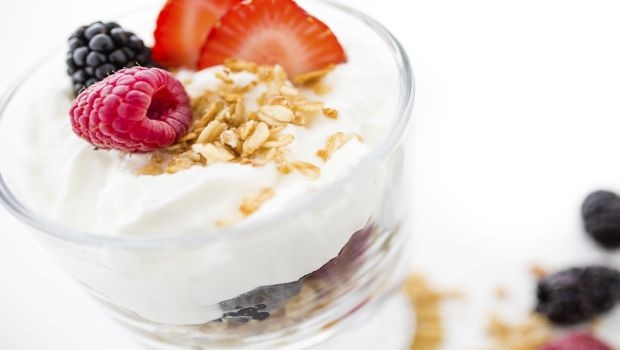Greek Yogurt Popularity Continues to Soar; USDA Adds it to School Menus
Over the past few years, Greek-style yogurt has been the darling of the dairy aisle due to its healthy halo and on-the-go convenience for harried consumers of all ages. According to “The Yogurt Market and Yogurt Innovation, 2nd Edition" report, yogurt retail sales in the United States was roughly $9 billion in 2014, up more than 3 percent over the previous year. Much of the sector growth is in the Greek yogurt subcategory, which accounts for more than half the industry’s dollar sales.
May 12, 2015

Over the past few years, Greek-style yogurt has been the darling of the dairy aisle due to its healthy halo and on-the-go convenience for harried consumers of all ages. According to “The Yogurt Market and Yogurt Innovation, 2nd Edition" report, yogurt retail sales in the United States was roughly $9 billion in 2014, up more than 3 percent over the previous year. Much of the sector growth is in the Greek yogurt subcategory, which accounts for more than half the industry’s dollar sales.
However, along with huge success comes category maturity, which has slowed the sector to single-digit growth this last year compared to a few years ago. Just look at 2012 when new product launches of Greek and Greek-style yogurts comprised nearly 8 percent of global yogurt introductions. In fact, launches of Greek and Greek-style products made up 29 percent of U.S. yogurt launches, compared with Australia (15 percent) and Western Europe (10 percent).
But there is good news on the horizon thanks in part to of all things, the U.S. government. USDA recently said it intends to make Greek yogurt a permanent part of its national school lunch program as a meat alternative beginning in September 2015. The news came after a 12-state pilot program involving Greek yogurt suppliers, such as Chobani, indicated protein-rich foods not only have nutritional value, but students show sufficient demand for protein-rich products such a Greek yogurt.
USDA will accept bids from potential Greek yogurt suppliers for the 2015-2016 school year. It will be interesting to see if Chobani’s involvement in the pilot program will give the company an advantage since it is already a top-selling Greek yogurt brand in the United States and often credited with being a leader in the Greek yogurt revolution. According to Packaged Facts, Chobani held some 53 percent of the market in 2013; however, Dannon has significantly closed the gap across its portfolio of Greek brands, and other brands including Yoplait, Muller Quaker Dairy and YoCrunch are establishing a loyal following.
The market also has seen an increasing range of formats and flavor options. Products tend to be probiotic and to come in a range of fat contents, commonly featuring whole milk, 2-percent fat and 0-percent fat variants. Traditional plain and honey variants also have been joined by a range of fruit and other options led by U.S.-style flavors, such as blueberry, strawberry, cherry and key lime pie.
You May Also Like




.png?width=800&auto=webp&quality=80&disable=upscale)